|
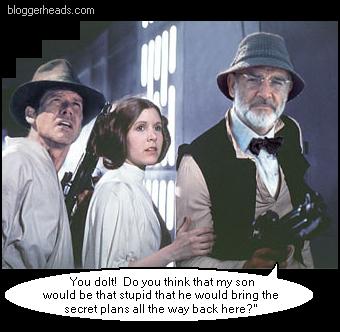
ASTROLOGY
LEGEND
King Arthur of Britain and Arthurian Mythology
... Gaelic Divinities have in their character the range of Fairy-Folk of popular Gaelic tradition... we proceed to consider the Brythonic Divinities in the same way, beginning with the greatest of them all, Arthur. Even a superficial acquaintance with the Arthurian Legend shows how impossible it is to place upon it any one interpretation to the exclusion of other interpretations, for in one aspect Arthur is a Brythonic divinity and in another a sixth-century Brythonic chieftain. But the explanation of this double aspect seems easy enough when we regard the historical Arthur as a great hero, who, exactly as in so many parallel cases of national hero-worship, came—within a comparatively short time—to be enshrined in the imagination of the patriotic Brythons with all the attributes anciently belonging to a great Celtic god called Arthur. The hero and the god were first confused, and then identified, and hence arose that wonderful body of romance which we call Arthurian, and which has become the glory of English literature.
Arthur in the character of a culture hero, with god-like powers to instruct mortals in wisdom, and, also, as a being in some way related to the sun—as a sun-god perhaps—can well be considered the human-divine institutor of the mystic brotherhood known as the Round Table. We ought, probably, to consider Arthur, like Cuchulainn, as a god incarnate in a human body for the purpose of educating the race of men; and thus, while living as a man, related definitely and, apparently, consciously to the invisible gods or fairy-folk.
 ... the Celtic Doctrine of Re-birth, that anciently among the Gaels and Brythons such heroes as Cuchulainn and Arthur were also considered reincarnate sun-divinities. As a being related to the sun, as a sun-god, Arthur is like Osiris, the Great Being, who with his brotherhood of great heroes and god-companions enters daily the underworld or Hades to battle against the demons and forces of evil, even as the Tuatha De Danann battled against the Fomors. And the most important things in the traditions of the great Brythonic hero connect him directly with this strange world of subjectivity.
... the Celtic Doctrine of Re-birth, that anciently among the Gaels and Brythons such heroes as Cuchulainn and Arthur were also considered reincarnate sun-divinities. As a being related to the sun, as a sun-god, Arthur is like Osiris, the Great Being, who with his brotherhood of great heroes and god-companions enters daily the underworld or Hades to battle against the demons and forces of evil, even as the Tuatha De Danann battled against the Fomors. And the most important things in the traditions of the great Brythonic hero connect him directly with this strange world of subjectivity.
-W. Y. Evans Wentz,
The Fairy-Faith in Celtic Countries
King Arthur awakened from his long sleep, in which were many fevered dreams, and he rose and looked about him. Deep bowered and fair, the green landscape stretched away upon all sides. Sweet apple trees grew by the banks of a shallow stream, and white blossom was upon them like snow. But though the season should have been winter, the air was balmy and soft, and above, in the sky, the sun and moon shone forth together, and there were stars. Then Arthur knew that he was in Avalon, the Region of the Summer Stars, where rain and snow fall not, and where the great ones of the world await to call to arms. Smiling to himself, Arthur stretched his muscles and set off to walk by the stream, listening of the murmur of voices that would tell him that the Round Table was met again amid the trees.
HIC JACET ARTHURUS QUONDAM REXQUE FUTURUS[Here Lies Arthur, the Once and Future King]
Truly it is like an island entirely surrounded by marshes, whence it is called in British Inis Avallon, that is "Apple-tree Island." Truly that place abounded in apples, what are called by the British tongue aval.
Glastonbury in Somerset was called the Isle of Avalon in ancient times, the place where Britain's legendary King Arthur was conveyed for healing after his final battle. Avalon is first mentioned in Geoffrey of Monmouth's Historia regum Britanniae (c. 1136). The "Island of Apples" may be connected with Celtic legends about an "isle of glass" inhabited by the bravest heroes.
Indiana Jones and the Last Crusade explores many of the stories that link Arthur's Quest for the Holy Grail, Celtic Saints, and the Crusades with European mystery rites linked to clues that track the sacred relic. Some have been handed down in writing and others via tradition, as illustrated in the film. The Grail diary, recorded and kept by Henry Jones, Sr., was considered the ultimate compilation of known and available information on the subject. In the movie, the Jones diary is almost a character in the development of the theme - with it's own personality, spiritual quality, and destiny path.
Joseph of Arimathea
One of the most popular legends suggests Joseph of Arimathea, the uncle of Jesus, was an ancestor of King Arthur, providing an explanation as to Arthur's Quest and many facts that contribute to Grail legend. Glastonbury Tor and Glastonbury Abbey represent original mystery sites of the cauldron and mystical intersections of power. They would logically be an appropriate resting place for the Holy Grail. The Abbey is "traditionally the oldest above-ground Christian church in the World," which according to the legend was built at Joseph's behest to house the Holy Grail. Another background story suggests that Joseph, a wealthy merchant in the ancient world, visited Glastonbury during his travels. On one of his trips he brought his nephew Jesus [during the 'lost years' when Jesus was still a child] and they built the first above ground church at the site. Word of mouth stories like these are considered 'tradition' and, in some cases, just as valid as written accounts. Also, from an objective observer's perspective, the story would explain the miraculous healing waters that pour forth from the Chalice Well spring at a rate of 25,000 gallons per day. William Blake had mentioned the legend in a poem that became a popular hymn, Jerusalem.
The Wind and the Lion
"It's 1904, but Mulay El Raisuli (Connery), Sheriff of the Riffian Bergers, belongs to a much earlier time, a time of desert chieftains and acts of legendary courage."

FIRST KNIGHT *
Trump IV and Trump XXI ~ CAMELOT!
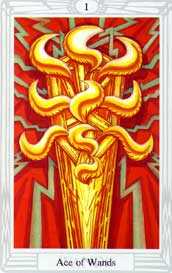
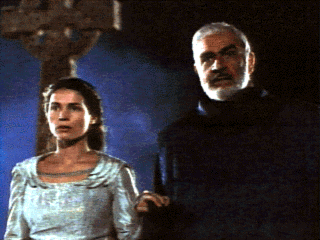 Connery’s Sun is in Virgo @ 1 degree in his 7th house of blueprints (Tarot students ~ the 7th house or department of life corresponds to Trump VII in The House System * The Drawing Room and Gym.)
Connery’s Sun is in Virgo @ 1 degree in his 7th house of blueprints (Tarot students ~ the 7th house or department of life corresponds to Trump VII in The House System * The Drawing Room and Gym.)
Gere’s Sun is @ 1 degree Virgo in his 10th house of construction. It's amazing both actors have appeared on the screen together in only one film. Both have a desire to spiritualize the terrestrial.
The late night scene with torch-lit sky highlighting rows of ancient standing stones stuck in my mind long after I left the theatre. There are signs of serious reflection about both technical and historical features by cast and crew. Connery as King Arthur has the plan for Camelot and Gere actualizes the vision in the public view via 10th house action on his march to Leonesse as spirit takes Lancelot.
Archaeoptics
Edinburgh - some mystic ancestors

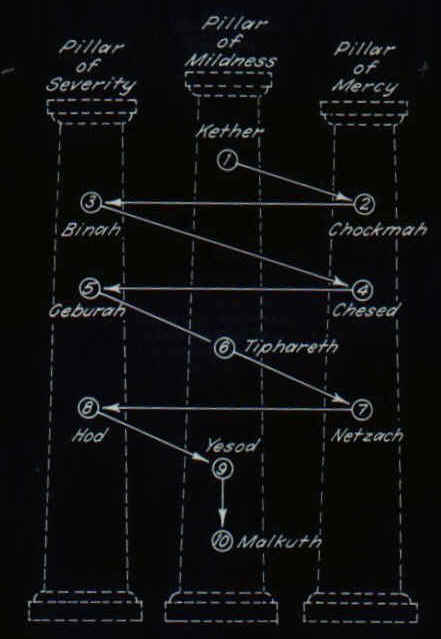
Sean Connery Special for Dinner Banquet [angels in kitchen - see Nutrition above]
The power of Regulus @ 29 Leo, conjunct Connery’s Sun/Neptune and Gere’s Sun/Saturn, fuses the mystical heart chamber in the ideal of nobility, clearly emphasized in the lives of both actors and their character development through this film.
First Knight 1995: The great speech of King Arthur of Camelot
4:15
Lancelot holds off a full scale attack almost single-handedly. Connery’s Neptune @ 3 Virgo in his 7th house (drawing up templates) conjuncts Gere’s Saturn in Virgo @ 3 degrees in his 10th house of fame and reputation, credible action, and his legacy. This Virgoan degree adds additional emphasis to the 'psyche bond' between Arthur and Lancelot. The degree is an indication of clairvoyant ability. This is the only scene in which we see King Arthur in command of his army on a battlefield. He wears the brass breastplate, symbol of exorcism, as the perfect general. As sons of darkness scatter, Arthur's army shapes itself into an arrow aimed at the target centre. Traditionally, King Arthur was born during the month of the Centaur-archer, Sagittarius. In order to reach the status of an exorcist, he found Merlin an ideal guide as he began to develop transcendental awareness beyond ordinary sixth sense perception. Precise discipline of Neptune is necessary. [Recent discoveries show that Merlin built Stonehenge, with stones he brought over from Ireland.] Connery, as the King Arthur we want to believe in, delivers solid confirmation that we become what we envision when we invest in our self-wish. Richard Gere ‘gets it all together’ and is able to overcome his 'backward looking' tendency. He clearly understands Saturn (structure, the rules, life lesson) before the curtain goes down so he can tie into an elite, romantic Celtic legend.
The 3 Pillars above right, re: The Man Who Would Be King
Director: John Huston
Stars: Sean Connery as Daniel Dravot, Michael Caine as Peachy Carnehan, Christopher Plummer as Rudyard Kipling, and Shikira Caine as Roxanne
Based on the short story by Rudyard Kipling, The Man Who Would Be King took 25 years to reach the silver screen. Originally it was intended that Clark Gable and Humphrey Bogart should play the leads. Huston said, “Connery and Caine are ideal.”
With their British military training they can teach the locals, usurp the king, and make off with all the treasure. The theme refers to Trump V and Trump XI generally, the two brothers: hindsight and foresight.
Quest: The Legendary Lost City of Alexander the Great in Kafiristan, Skirandergul, the ancient Holy City
Location: Morocco, foothills of the Atlas Mountains
Motivation: 1880 time window when a change in global cultural awareness made this story possible. The influence of the Masonic Temple, Theosophy, and Spiritualism prevailed in the metaphysical-social community, as also evident in the teaching of Dr. Joseph Bell reflected in the short stories of
Sherlock Holmes by Sir Arthur Conan Doyle.
From the text: The distinction between the esoteric and exoteric doctrines (a distinction purely Masonic), was always and from the very earliest times preserved among the Greeks. It remounted to the fabulous times of Orpheus; and the mysteries of Theosophy were found in all their traditions and myths. And after the time of Alexander, they resorted for instruction, dogmas, and mysteries, to all the schools, to those of Egypt and Asia, as well as those of Ancient Thrace, Sicily, Etruria, and Attica. -Morals and Dogma

The Tarot - The Minor Arcana, the Suit Cards
Character: King or Knight of Disks, Sean Connery Sun - secondary influence from Leo-Virgo cusp
The Knight of Disks represents the fiery part of Earth, and refers in particular to the phenomena of mountains, earthquakes, and gravitation; but it also represents the activity of Earth regarded as the producer of Life. He rules from the 21st degree of Leo to the 20th degree of Virgo, and is thus concerned greatly with agriculture. This warrior is grounded and sturdy in type. He is clothed in great solidity of plate armour; but his helmet, which is crested with the head of a stag, is thrown back, for at the moment his function is entirely confined to the production of food. His view of the horizon, across fertile land, takes into account distant hills that are a continuation of cultivated fields. Many of these symbols are a solid reference to nutrition, linked with the idea of Avalon a perfect place full of apple orchards [reference to Garden of Eden?], and the Arthurian character known as The Green Knight.
This influence rises from Mercury in Virgo, corresponding very closely indeed with the Fire of Earth attribution in the Qabalistic system. The smouldering fire is part of the process of growth [when the harvest arrives]; the whole system of symbolism is based upon Realities of Nature written in the scroll of Trump II The Priestess. Such coherence, romance and imagination are primary ingredients in the legend of The Green Knight.
see The Occult Anatomy of Man
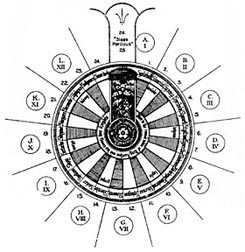
Now the time of rebirth has come upon the world again, and though these years open wide their solstices and eclipses as windows to the ideas, yet, finally, the manner in which we present ourselves in that cumulatively intense final moment may well be a personal decision. Time grows ever more short; in the cosmic year-day of history, dawn is already breaking over Jerusalem.
-Dennis J. McKenna and Terence K. McKenna, The Invisible Landscape
The legendary chivalric knights were prepared for the ‘conversation’ in the lower left ventricle of the heart. The mortal and immortal self will continue to exchange verse, and retain inner child qualities, including the search for the heart’s desire in an objective world. Perhaps that is why so many took vows to find the Holy Grail. (The quest for the Grail is a frequent theme for Connery, but that is another story.)
These qualities of vulnerability were protected by the knights’ willingness to submit to the direction of (law) Saturn. Saturn is personified, in FIRST KNIGHT by Connery, who has Saturn in Capricorn just above his horizon, indicating first rate steel retrofitting for his Capricorn Ascendant. In FIRST KNIGHT, Connery represents the friendly judge, the judge who is not pitching a tent on the Pillar of Severity. King Arthur also has access to, and uses the Pillar of Mercy equally well. Equilibrium is a very rare quality to find in a ruler, and may be the reason Arthur was so well loved. And this, of course brings in the ancient Celtic system. Archeological references to ancient Celts as Qabalistic (and probably Mithraic as well, judging from the various names of Gandolf the wizard, in Tolkien’s LORD OF THE RINGS) – are surfacing daily, even in Christian research, as Dr. Gene Scott observes. There is also a bit of Solomon, The King because of the exorcist reference while doing battle with Malagant (Ben Cross) that so vividly depicts polarization in the kingdom.
Into this polarization of forces at play enters the element of the wanderer, suggested by Trump 0/22 and balanced by the Leo heart. Gere plays two parts, just as Sean Connery does. Gere is both the wanderer and the knight in training. The film suggests that in order for Lancelot to complete his training as the greatest knight in history, it was necessary for him to understand Saturn and be guided by Saturn in the person of King Arthur.
Jerry Zuker (also directed GHOST), in his presentation of Camelot, simply terrestrializes his eloquent illustration of the two extreme rewards
 that are available to mortals as they leave this incarnation. The first vision is the beauty and elegance of Camelot, shining in the light above ground as the perfect city, reminiscent of New Jerusalem and Trump XXI, Chapter 21 of The Apocalypse.
The other less desirable, submerged domain of Malagant, the interior of a slate mine complete with a bottomless pit, is the alternate option.
that are available to mortals as they leave this incarnation. The first vision is the beauty and elegance of Camelot, shining in the light above ground as the perfect city, reminiscent of New Jerusalem and Trump XXI, Chapter 21 of The Apocalypse.
The other less desirable, submerged domain of Malagant, the interior of a slate mine complete with a bottomless pit, is the alternate option.
In this presentation of the story, Guinevere (Julia Ormond) plays the vulnerable, weakest link in the chain, always testing the strength of the individuals who encounter such people. Any society is tested by the attitude and treatment of those who are weakest in the system. Perhaps this refers us to the saying, ‘The meek shall inherit the earth.’ (provided they don’t take a left at Albequerque and keep on going.) The concept being that those who trust that the strongest knights will appear when the darkest hour is upon us, are the ones who ultimately win the day. This of course was one of the strongest beliefs of Thomas Jefferson and the founding fathers, and that is why religious freedom is written into the Constitution of The United States.

Kevin J. Harty believes King Arthur, his Queen and his knights should have no specific chronological limitations or predictable "chemistry" based on their life experiences. Harty writes, "What then are we to make of the ages of the principals in First Knight? Despite several literary suggestions about the ages of the principals, there is clearly no one literary tradition that First Knight runs counter to. Interestingly, there is, it turns out, no cinematic tradition that is being violated either. From Edison's 1904 Parsifal through more than seventy other film versions of the legend of Arthur, there is no one tradition about how old the principal characters can or should be."
You Tube scene from Sword of the Valiant: The Legend of Sir Gawain and the Green Knight
1983 Sword of the Valiant -- Sean Connery plays an iridescent Green Knight -- with an almost ancient Trevor Howard as Arthur to Miles O'Keefe's forty or so years younger Gawain.
Heraldry/clip art
Buy the FIRST KNIGHT DVD





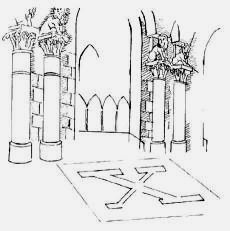

Trump XVIII The Moon

Indiana Jones Star Menu

Harrison Ford - Indiana Jones
Title: The Name of the Rose
Directed by Jean-Jacques Annaud, 1986
Based on The Name of the Rose, by Umberto Eco
Stars: Sean Connery, Christian Slater,
Michael Lonsdale, Ron Perlman, and
F. Murray Abraham
 Sean Connery and Christian Slater
navigate 'the dark times'
The Name of the Rose (making of)
you tube 46:00
The Name of the Rose is set in a medieval time window so different from the 21st Century the characters might as well be in a mazed paradigm with the scifi properties of an alien, off-world race. Put simply, the story unfolds in 1327, retaining the poverty, tragedy, and blind power of the Dark Ages, when people burned at the state for suggesting blood circulates through the physical body. By precise tradition, this period of pain and sorrow lasted from the 400’s to 1000’s, and is frequently extended to include and augment the infamous raid on Knights Templar, Friday, October 13, 1307.
The pact between Church and State is still in effect when the story begins, only 20 years after the arrest, torture and massacre of all knights in the Templar Order across France. This corrupt atmosphere [you can’t fight city hall] is carefully established through the relationship between the Franciscan friar William of Baskerville [Sean Connery] and his apprentice, Adso of Melk [Christian Slater]. We are not told details about when and where a religious force was pressed by political connections to facilitate the tutor-novice arrangement but dialogue suggests a blessing from the collage of cardinals.
The production design. The threatening atmosphere is further reinforced by the interiors of the abbey, shot in the former Cistercian monastery of Kloster Eberback, in Germany - perhaps an allusion to the Templars’ betrayal. When William and Adso arrive at the remote abbey in Northern Italy, one Christian pope [in the West] had his papacy in Rome and the Emperor, who once intervened on William’s behalf in a previous chapter of his life, remained friendly to the controversial scholar.
William and his protégé travelled a slow, tedious, barren road to attend a monastic debate with other distinguished members of the clergy. Lord Bishop [Lonsdale] greets them and informs William of a recent, accidental, death of a popular young transcriber working in the library. The Lord Bishop asks William to inquire [as to a plethora of incongruities], to save everyone in the vicinity an unfortunate visit from the Inquisition. His affiliations come into question however, when William presents him with a specially treated parchment, prepared with lemon juice to conceal a secret message. The Lord Bishop burns the scrap of evidence that could prove something other than ‘the cloven’ is afoot and promptly sends for Bernardo Gui [F. Murray Abraham], a notorious sadist working for the Inquisition. Times like these, there is a thin line between devotion and superstition.
The plot thickens and a breakthrough is finally realized by William, once he and Adso gain entry to a hidden library that rests inside the tower labyrinth. Years ago, books long considered ‘lost’ and nonexistent were stashed deep within the inner walls of stone and abandoned, left to gather dust. This editing of scripture had extended to include a second book of Aristotle, of personal interest to William. But now the summons of a ticking clock calls forth ‘trials’ slated for the next day. This is a moment of rebirth for William Baskerville. He realizes he can ‘return’ to former times via the pre-written script ahead, and redraw the tapestry design of his life. Perhaps he can also save the lives of others.
Note on the Piscean Era and its sado-masochistic ladder system: During this era, especially in the final stage, the debate between positive Mars and negative Mars still holds us fast. Some people believe a civilization may choose to employ a negative Mars instead of positive Mars and not be diminished thereby. The Name of the Rose is built on a foundation of arguments for both viewpoints in the same way the scholarly debate about the true owner of Christ’s garments is developed. The sub-text judgment of the film that describes a tug-of-war, Divine Law v Mortal Law, favors the enlightened approach to a search for truth. Too bad the last two thousand years didn’t contain edits and rewrites by Umberto Eco.
I personally found the location of the secret cache of wisdom, inside the labyrinth, a profound statement about the plan to govern by withholding knowledge that was once available to the general public [BCE]. During the Crusades, when pilgrims could not visit the Holy Land safely, labyrinths were constructed throughout Europe to provide temporary means for the faithful to ‘reach Christ consciousness’ – via the sacred journey to the center of the labyrinth. Most artists reserved the center of the circle for the throne of Christ, encircled by apostles, signs of the zodiac, months of the year, and so on. What better place for the librarians to conceal the wisdom, inspiration, and knowledge the faithful need to reach illumination? The possibility of reintroducing the lost tomes into exoteric public life emerged via the presence of the clergy on the event of their great debate. Instead the abbey tower was set on fire and the golden pages within burned to dust.
It is true we learn from our mistakes, through pain and sorrow, through trial and error, because the military era [Pisces] favors ‘the school of hard knocks.’ But little can condition some of us for the cruel torture of innocents. A once-heretic hunchback monk, Salvatore [Ron Pearlman], who seems an echo of William Baskerville’s earlier torture, confession, conviction, and repudiation of his change of heart, is difficult to watch. This script reads like a similar account of the testament of Templar Grand Master Jacques de Molay.
Brought before a commission engineered by Phillip IV, established by Pope Clement V, de Molay and other leaders were judged relapsed heretics and sentenced to life in prison. The master protested and repudiated his confession and was burned at the stake, the last victim of a highly unjust and opportunistic persecution.

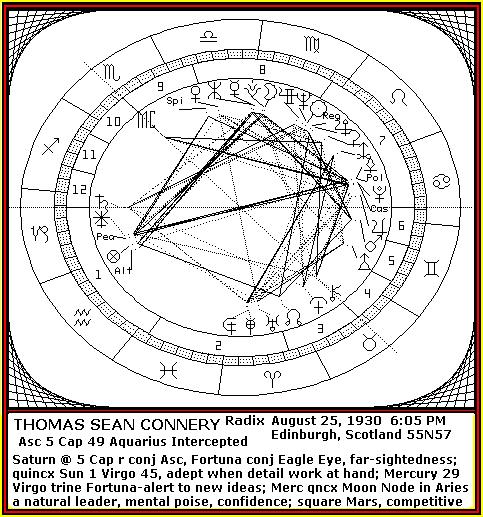
Sean Connery Star Chart
I am a leaf driven by the wind..... who are you ?
Music used in the "Robin of Sherwood" television series.
Came upon an ancient forest
A guiding power had led me there
Walking through the mystic forest
The legend, tale of times gone by.
Reflection deep in wooded lands
A floating mist that circles shadows
A legend, tale of times gone by.
Giant trees are are falling night and day
For many years and ages past
Will they ever share the answer
Of legend, tales, and times gone by?
Walking through the mystic forest.....
I'm walking through the mystic forest....
Clannad Songlist Ancient Forest Appears
on Legend,
Themes,
Rohga: The Best of Clannad
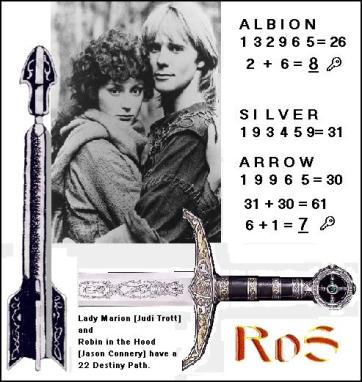
ROBIN OF SHERWOOD
The Inheritance, Season 3
This episode is one of my favorites from the whole ROS series because it combines the legend of King Arthur and the legend of Robin Hood. Enchanting music by Clannad blends with unique special effects in the awesome final scenes.
In an old castle live a young girl Isadora and her father Agrivaine, who is the guardian of a priceless treasure. Agrivaine forsees conflict, a young champion on the horizon, and his own death in the Tarot cards. It is the immediate danger that troubles him in the first part of the story. Raven, a one-eyed ruffian, together with Mortimer, Agrivaine's ex-steward, specialize in pillaging anything of value. Isadora enters the forest and seeks the help of Robin Hood.
Guest stars Cyril Cusack, Derrick O'Connor and Cathryn Harrison
Written by Anthony Horowitz Directed by Ben Bolt
Jason Connery-Robin Hood
Acorn Media combined all ROS episodes in a 10-Disc Robin of Sherwood - The Complete Collection set.
This collector's edition features all 26 episodes, digitally remastered and running 22 hours. Plus over
17 hours of fabulous extras. source tv show on dvd Complete Collector's Edition Release
clip art Merry Doings of Robin Hood
Champion, Fighter, Gladiator

Jupiter and Ian Fleming bio
BACK to Capricorn
Robin Hood Star Charts for ROS and Movie Robins
Director George Lucas - hand comparison Lucas and Harrison Ford
DEVA OF RAGLAN CASTLE

 * REGULUS (Alpha
Leonis). Regulus, glowing at the heart of Leo the Lion, one of the great constellations of the Zodiac, is near the end of the list of first magnitude stars. At a distance of only 79 light years (second Hipparcos reduction), it shines in our sky at magnitude 1.35, just marginally brighter than the next one down, Adhara, the second brightest star of Canis Major. The Latin name means "the little king," the reference to a kingly star going back to ancient times. Regulus marks the end of an asterism called the "Sickle of Leo," a sickle-shaped figure that outlines the head of the celestial Lion. The star is almost exactly on the ecliptic, the path of the Sun, and is regularly occulted, or covered over, by the Moon. To the southeast of Regulus, find the brighter star Spica. The autumnal equinox, where the Sun crosses the ecliptic in late September, lies right between the two.
* REGULUS (Alpha
Leonis). Regulus, glowing at the heart of Leo the Lion, one of the great constellations of the Zodiac, is near the end of the list of first magnitude stars. At a distance of only 79 light years (second Hipparcos reduction), it shines in our sky at magnitude 1.35, just marginally brighter than the next one down, Adhara, the second brightest star of Canis Major. The Latin name means "the little king," the reference to a kingly star going back to ancient times. Regulus marks the end of an asterism called the "Sickle of Leo," a sickle-shaped figure that outlines the head of the celestial Lion. The star is almost exactly on the ecliptic, the path of the Sun, and is regularly occulted, or covered over, by the Moon. To the southeast of Regulus, find the brighter star Spica. The autumnal equinox, where the Sun crosses the ecliptic in late September, lies right between the two.

Sean Connery death hoax spreads on Facebook
UPDATE 08/09/2015 : This story seems to be false.
News of actor Sean Connery’s death spread quickly earlier this week causing concern among fans across the world. However the September 2015 report has now been confirmed as a complete hoax and just the latest in a string of fake celebrity death reports. Thankfully, the former James Bond is alive and well.





10 Forward Star Trek galley, Bat Cave,
Colour Us Inn,
Indiana Jones Menu,
Innholders' Company,
It's All In The Sauce,
Jupiter Table
magic spice,
Mercury Table,
Oracle's Lab,
shrmx,
smoothie,
Starshine Inn -Star Wars,
tangerine,
vittles, Western Inn, Zeppelin Diner


 Abramelin | Alchemy | Ancient Oracle | Articles | Artists ~ Rock & Roll | Astrology | Astroscape | Aura | Babylon 5 | Beat | beatles |
Bus |
Candles |
Colour Waves | Constantine | Deva | Divination | Dowser | Early Heraldry | FAQ | Gladiator-Champion-Fighter | Haight-Ashbury | Heartwarmer * Bread & Roses | Hip | Hobbit Dowser - Nyll Greenwood | Hogwarts | House System * Sacred Tarot | Internal Spectrum | Lab | Mandala | Mask-Who Was That Masked Man? | Masked World | Matrix | Meditation Index | Middle-earth Inn | Mirror | Mountain | Mystique | Neutrals | Number 1-9 | 11-22-33 | Palm | Parapsychology | Phoenix | Pix | Quiz | Sacred Place | Shrine | Site | Sixth Sense | Son of Spooky | Space | Star Chart (by Zodiac) Listing | Star Trek | Star Wars | Still Zone | Stonehenge | Tao | Transcription breaks | Transform | Tutoring | Twitter | Unicorn | Unknown Museum | Unnumbered Tarot | Us | US Time | Valentine | Vote Star Charts | Wall | Wands | Whale | Wizard | Your Elf | Zone
Abramelin | Alchemy | Ancient Oracle | Articles | Artists ~ Rock & Roll | Astrology | Astroscape | Aura | Babylon 5 | Beat | beatles |
Bus |
Candles |
Colour Waves | Constantine | Deva | Divination | Dowser | Early Heraldry | FAQ | Gladiator-Champion-Fighter | Haight-Ashbury | Heartwarmer * Bread & Roses | Hip | Hobbit Dowser - Nyll Greenwood | Hogwarts | House System * Sacred Tarot | Internal Spectrum | Lab | Mandala | Mask-Who Was That Masked Man? | Masked World | Matrix | Meditation Index | Middle-earth Inn | Mirror | Mountain | Mystique | Neutrals | Number 1-9 | 11-22-33 | Palm | Parapsychology | Phoenix | Pix | Quiz | Sacred Place | Shrine | Site | Sixth Sense | Son of Spooky | Space | Star Chart (by Zodiac) Listing | Star Trek | Star Wars | Still Zone | Stonehenge | Tao | Transcription breaks | Transform | Tutoring | Twitter | Unicorn | Unknown Museum | Unnumbered Tarot | Us | US Time | Valentine | Vote Star Charts | Wall | Wands | Whale | Wizard | Your Elf | Zone
This Dowser Page is maintained by webmistress Gléwen Greycloak
last updated August 2016
|
|